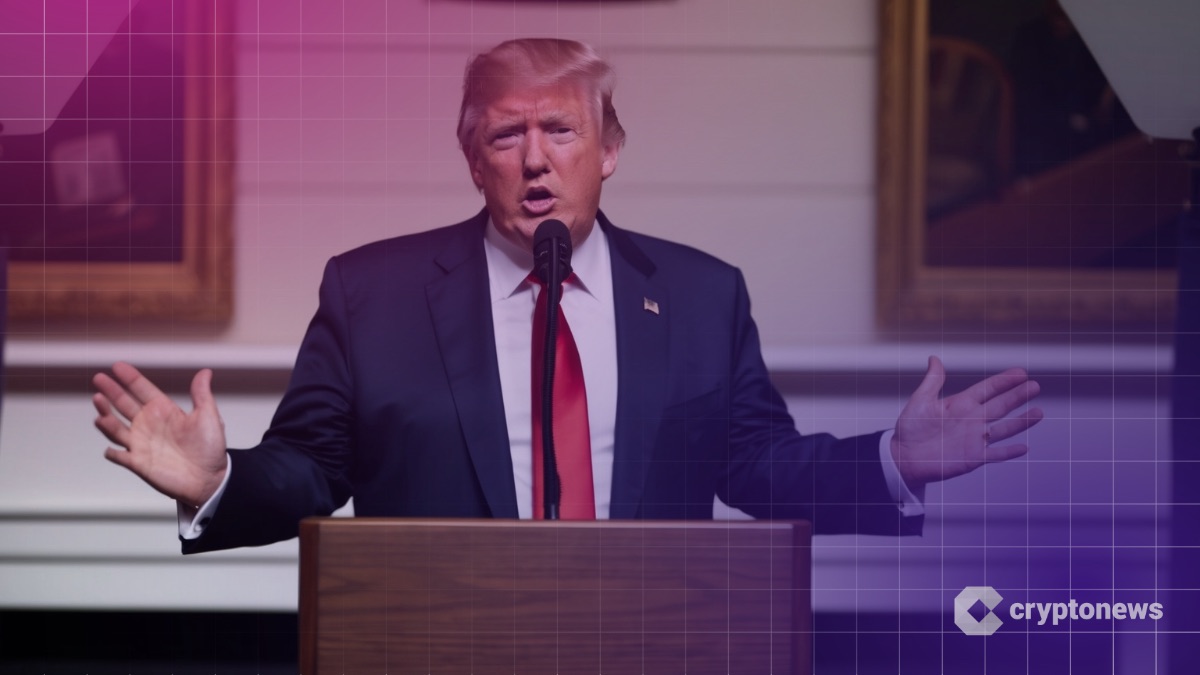Market Reacts to Trump’s ‘Liberation Day’ Reciprocal Tariffs

President Donald Trump announced a sweeping new tariff policy on Wednesday, establishing a baseline 10% tariff on all imports and introducing reciprocal tariffs that mirror half of each trading partner’s respective rate, marking a major shift in U.S. trade approach.
The announcement, which targets key U.S. trade partners, sent ripples through financial markets as investors assessed the implications for inflation, corporate earnings, and supply chains.
Market Response to Tariffs
The immediate market reaction was mixed. U.S. stock futures saw early losses as investors digested the impact of the tariffs, particularly on multinational corporations reliant on foreign supply chains.
The S&P 500 and Dow Jones Industrial Average both dipped in pre-market trading, while tech-heavy Nasdaq, with its exposure to global semiconductor supply chains, took a sharper hit.
Bitcoin initially climbed slightly as Trump’s speech began but quickly stabilized around $86,000, reflecting a measured response from cryptocurrency traders.
Gold prices edged higher as investors sought safe-haven assets amid concerns about global trade disruptions.
Meanwhile, the U.S. dollar strengthened against emerging market currencies, as investors anticipated capital inflows to the U.S. economy due to rising protectionism.
Industries in Focus
Manufacturing and consumer goods companies with significant exposure to Asia faced immediate scrutiny.
Trump’s reciprocal tariff structure places heavy levies on imports from Cambodia (49%), Vietnam (46%), Bangladesh (37%), and China (34%), all of which are critical sourcing hubs for textiles, electronics, and consumer goods.
U.S. retailers that depend on these supply chains are expected to face cost pressures, potentially passing higher prices on to consumers.
Tech giants dependent on Taiwanese (32%) semiconductor production watched markets nervously, while South Korean (25%) chip imports could face substantial cost increases.
For auto manufacturers, the potential tariffs on Japanese (24%) and European Union (20%) components triggered stock volatility as analysts calculated possible price impacts.
Political and Economic Implications
During his announcement, Trump declared, “We have to take care of the American people,” reinforcing his administration’s commitment to reducing trade imbalances and bolstering domestic production.
However, analysts warn that the policy could provoke retaliation from trading partners, triggering a new round of trade disputes.
The coming weeks will reveal whether Trump’s tariff strategy effectively reshores jobs or generates inflationary pressures that could weigh on consumer spending and economic growth.
Markets will be closely watching for responses from foreign governments, corporate earnings adjustments, and potential legal challenges from affected industries.
The post Market Reacts to Trump’s ‘Liberation Day’ Reciprocal Tariffs appeared first on Cryptonews.
Market Reacts to Trump’s ‘Liberation Day’ Reciprocal Tariffs

President Donald Trump announced a sweeping new tariff policy on Wednesday, establishing a baseline 10% tariff on all imports and introducing reciprocal tariffs that mirror half of each trading partner’s respective rate, marking a major shift in U.S. trade approach.
The announcement, which targets key U.S. trade partners, sent ripples through financial markets as investors assessed the implications for inflation, corporate earnings, and supply chains.
Market Response to Tariffs
The immediate market reaction was mixed. U.S. stock futures saw early losses as investors digested the impact of the tariffs, particularly on multinational corporations reliant on foreign supply chains.
The S&P 500 and Dow Jones Industrial Average both dipped in pre-market trading, while tech-heavy Nasdaq, with its exposure to global semiconductor supply chains, took a sharper hit.
Bitcoin initially climbed slightly as Trump’s speech began but quickly stabilized around $86,000, reflecting a measured response from cryptocurrency traders.
Gold prices edged higher as investors sought safe-haven assets amid concerns about global trade disruptions.
Meanwhile, the U.S. dollar strengthened against emerging market currencies, as investors anticipated capital inflows to the U.S. economy due to rising protectionism.
Industries in Focus
Manufacturing and consumer goods companies with significant exposure to Asia faced immediate scrutiny.
Trump’s reciprocal tariff structure places heavy levies on imports from Cambodia (49%), Vietnam (46%), Bangladesh (37%), and China (34%), all of which are critical sourcing hubs for textiles, electronics, and consumer goods.
U.S. retailers that depend on these supply chains are expected to face cost pressures, potentially passing higher prices on to consumers.
Tech giants dependent on Taiwanese (32%) semiconductor production watched markets nervously, while South Korean (25%) chip imports could face substantial cost increases.
For auto manufacturers, the potential tariffs on Japanese (24%) and European Union (20%) components triggered stock volatility as analysts calculated possible price impacts.
Political and Economic Implications
During his announcement, Trump declared, “We have to take care of the American people,” reinforcing his administration’s commitment to reducing trade imbalances and bolstering domestic production.
However, analysts warn that the policy could provoke retaliation from trading partners, triggering a new round of trade disputes.
The coming weeks will reveal whether Trump’s tariff strategy effectively reshores jobs or generates inflationary pressures that could weigh on consumer spending and economic growth.
Markets will be closely watching for responses from foreign governments, corporate earnings adjustments, and potential legal challenges from affected industries.
The post Market Reacts to Trump’s ‘Liberation Day’ Reciprocal Tariffs appeared first on Cryptonews.

